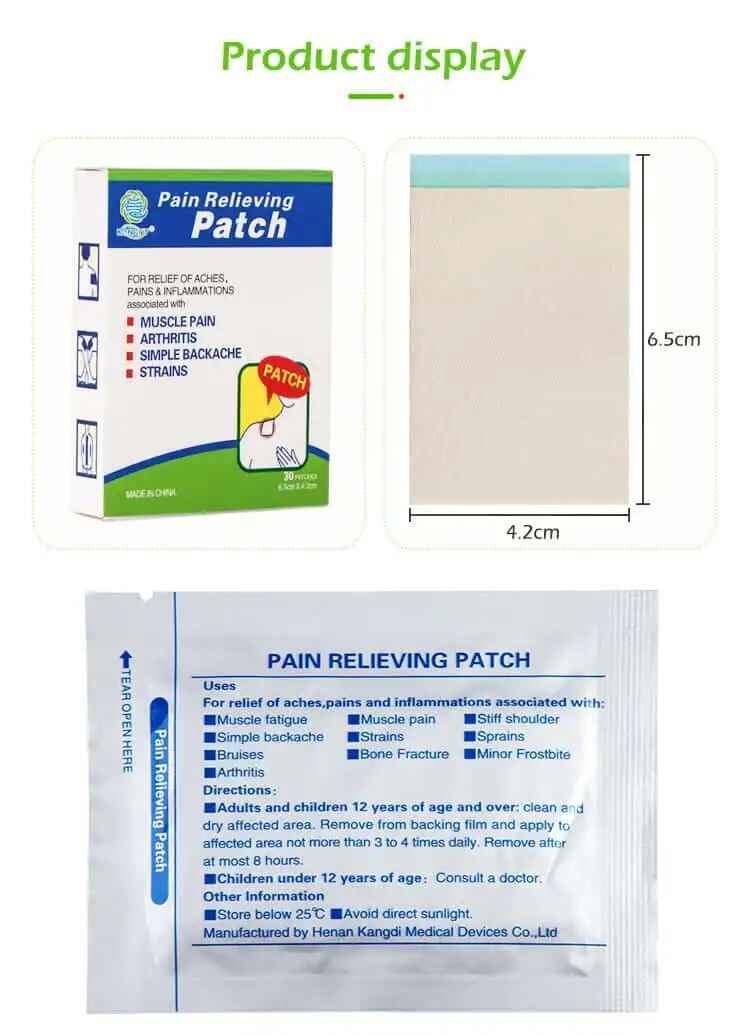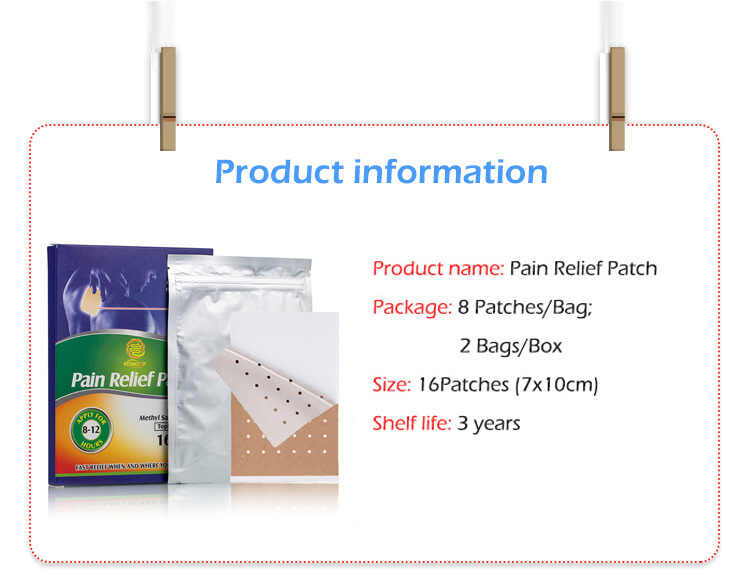How Can I Ensure the Safety of My Heat Therapy Patch Products?
As the demand for therapeutic solutions like Heat Therapy Patches continues to rise, safety becomes a non-negotiable factor for both manufacturers and consumers. Whether you are launching a Custom Heat Therapy Patch or looking to develop a Private Label Heat Therapy Patch, ensuring the safety of your products is paramount.
In this article, we’ll explore the key factors you should consider when partnering with a Heat Therapy Patch Manufacturer or Heat Therapy Patch OEM, and the steps you can take to guarantee the safety and efficacy of your products.

Understanding the Importance of Safety in Heat Therapy Patches
Heat Therapy Patches offer an effective, non-invasive solution for pain relief, helping users manage discomfort caused by conditions such as arthritis, muscle strains, or menstrual cramps. However, because these patches directly interact with the skin and deliver heat over extended periods, their safety must be carefully controlled.
Any defect in manufacturing or failure to meet safety standards can result in:
Skin burns or irritation
Chemical burns from improper formulation
Adverse reactions to ingredients
Lack of consistent heat distribution, leading to ineffectiveness
For any brand involved in the Heat Therapy Patch business—whether through Private Label Heat Therapy Patch or Custom Heat Therapy Patch—ensuring safety is a legal and moral obligation.
Key Safety Considerations When Choosing a Heat Therapy Patch Supplier
Selecting a reputable Heat Therapy Patch Supplier is one of the most critical decisions you will make in the product development process. To ensure the safety of your Heat Therapy Patch products, here are the top factors to keep in mind.
1. Compliance with Industry Regulations
The first step to ensuring the safety of your product is ensuring that your Heat Therapy Patch Manufacturer complies with industry regulations and standards.
Key regulations to look for include:
FDA Approval: In the United States, Heat Therapy Patches that are marketed for therapeutic use must meet FDA guidelines. Although the FDA doesn’t approve individual over-the-counter products, manufacturers must adhere to strict guidelines to ensure safety and efficacy.
ISO Certifications: ISO 13485 for medical devices is crucial. It demonstrates a commitment to quality management and safety in the manufacturing process.
CE Certification: For products sold in the European Union, CE marking confirms that the product meets safety, health, and environmental protection standards.
Ensure that your Heat Therapy Patch OEM partner has these certifications to ensure that your products are safe and legally compliant.
2. Quality Control and Manufacturing Standards
A strong quality control (QC) process is essential to ensure that your Custom Heat Therapy Patch meets safety standards. When choosing a Heat Therapy Patch Supplier, inquire about their QC practices, which should include:
Testing for consistency in heat levels: The patch should provide consistent, therapeutic heat for the recommended duration.
Material safety: Ensure that all components, such as the adhesive, heat-generating materials, and outer layer, are non-toxic and safe for skin contact.
Packaging integrity: The packaging should protect the patch from contamination, tampering, and environmental factors.
Ask for documentation that proves their commitment to safety, such as:
Third-party testing results: Independent tests verify that the patches meet required safety standards.
Batch testing: This ensures consistency across production runs, preventing any unsafe variations.
3. Ingredient Safety in Custom Heat Therapy Patches
If you’re developing a Custom Heat Therapy Patch, the safety of the ingredients used in the heat-generating mechanism is crucial. Common ingredients include iron powder, activated carbon, and salt, which generate heat through exothermic reactions.
Make sure your Heat Therapy Patch Manufacturer uses safe, dermatologically tested ingredients that do not cause skin irritation or adverse reactions. Look for:
Non-toxic, non-irritating chemicals: Always check if the ingredients meet global safety standards, especially if your target audience includes individuals with sensitive skin.
Hypoallergenic materials: Ensure that the patch’s adhesive and other materials are tested for hypoallergenic properties.
Dermatologist-approved formulations: The patch should be suitable for long-term skin contact without causing burns or rashes.
4. Product Testing for Heat Regulation
One of the most critical aspects of a Heat Therapy Patch is the ability to regulate heat safely. Overheating can lead to burns, while insufficient heat reduces the effectiveness of the product.
Your Heat Therapy Patch Supplier should conduct thorough thermal testing to:
Verify that the heat distribution is even and consistent
Ensure that the patch doesn’t overheat or cause skin discomfort
Validate that the patch maintains the right temperature for the recommended time (usually between 8 to 12 hours).
Request test results or certifications related to heat regulation from your Heat Therapy Patch OEM.
5. Skin Sensitivity and Irritation Testing
Since Heat Therapy Patches are worn on the skin for extended periods, they must be tested for skin sensitivity. This ensures the product does not cause irritation, redness, or allergic reactions.
Ask your Heat Therapy Patch Supplier if they conduct:
Clinical skin sensitivity tests: These tests assess how the patch reacts to prolonged skin exposure.
Patch tests: Small batches are tested on volunteers to identify any potential allergic reactions.
6. Packaging and Instructions for Use
Proper packaging and clear instructions are vital for safety. The packaging should:
Protect the patches from moisture and environmental factors.
Include clear, easy-to-read instructions about how to apply the patch safely and how long to leave it on the skin.
Warning labels should also be included to advise users of any potential risks, such as:
Not applying the patch to broken skin or open wounds
Avoiding use for extended periods to prevent burns
Keeping the patch away from children
These safety measures should be part of your Private Label Heat Therapy Patch offering.
Partnering with a Safe and Reliable Heat Therapy Patch Manufacturer
When looking for a Heat Therapy Patch Manufacturer, it’s crucial to choose one with a proven track record in safety and quality. Here are a few tips on how to find the right Heat Therapy Patch OEM:
Check their experience: Look for manufacturers who have been in the business for a while and have worked with reputable brands.
Look for client reviews and testimonials: Positive feedback from previous clients can give you insight into their safety standards and reliability.
Request a factory audit: If possible, visit the manufacturing facility or request a third-party inspection to verify safety protocols.
Final Thoughts: Safety Should Be Your Top Priority
Ensuring the safety of your Heat Therapy Patch products should be your top priority to protect both your customers and your brand’s reputation. Partnering with a Heat Therapy Patch Supplier that adheres to strict safety protocols, regulatory standards, and high-quality manufacturing practices will help you achieve that goal.
By focusing on factors such as ingredient safety, consistent heat regulation, and rigorous testing, you can create a product that delivers effective pain relief while keeping your customers safe. Whether you’re launching a Private Label Heat Therapy Patch or designing a Custom Heat Therapy Patch, safety should always come first.
Related Questions and Answers
1. How do I ensure the safety of my Heat Therapy Patch products?
Ensure your Heat Therapy Patch Manufacturer complies with FDA and ISO regulations, uses safe materials, conducts thorough testing, and offers clear product instructions.
2. What should I look for in a Heat Therapy Patch OEM regarding safety?
Look for certifications, quality control processes, ingredient testing, and safety testing data. Ensure they can meet your product’s heat regulation and skin safety needs.
3. How can I test the safety of my Custom Heat Therapy Patch?
Request independent third-party lab results and clinical skin sensitivity tests to ensure the patch is safe for all skin types.
4. Can a Private Label Heat Therapy Patch be just as safe as a custom one?
Yes. As long as the Heat Therapy Patch Supplier adheres to strict safety standards and regulations, both custom and private label patches can be equally safe.
5. What are the risks of an unsafe Heat Therapy Patch?
Unsafe patches can cause burns, skin irritation, allergic reactions, and a loss of customer trust, which can damage your brand reputation.






